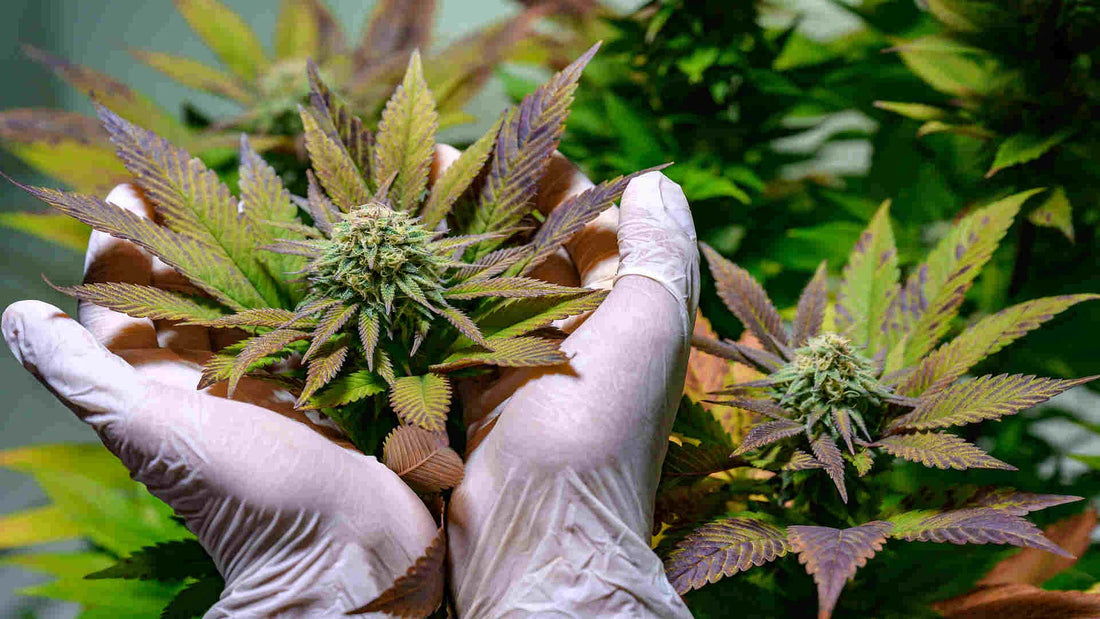
Transitioning Nutrients From Vegetative To Flowering Phase
Share
As cannabis plants transition from the vegetative stage to the flowering stage, their nutrient requirements change. Weed plants go through a transition between veg and flower known as "the stretch." This period involves significant changes in their nutrient needs, and understanding these changes is critical to maximizing yield and plant health. This article will explore how nutrient requirements shift during different growth stages, compare feeding practices for hydroponic systems and living soil and discuss essential nutrients for the flowering stage. By the end, you'll clearly understand how to prepare your plants for a successful flowering phase.
Nutrient Needs During Different Growth Phases
Plants have distinct nutrient requirements during various growth stages. During the vegetative stage, plants focus on developing solid stems, roots, and foliage, necessitating higher nitrogen levels. As plants transition to the flowering stage, their energy shifts toward producing flowers or fruits, requiring increased levels of phosphorus and potassium. Understanding these shifts allows growers to provide the appropriate nutrients at the right time, ensuring optimal growth and development.
Like all plants, cannabis requires the same 18 essential elements or nutrients throughout its lifecycle, but the quantities it consumes vary depending on its growth phase. Cannabis has three distinct growth phases: vegetative, transition (or stretch), and flowering. Each phase demands a unique nutrient profile to support specific physiological processes.
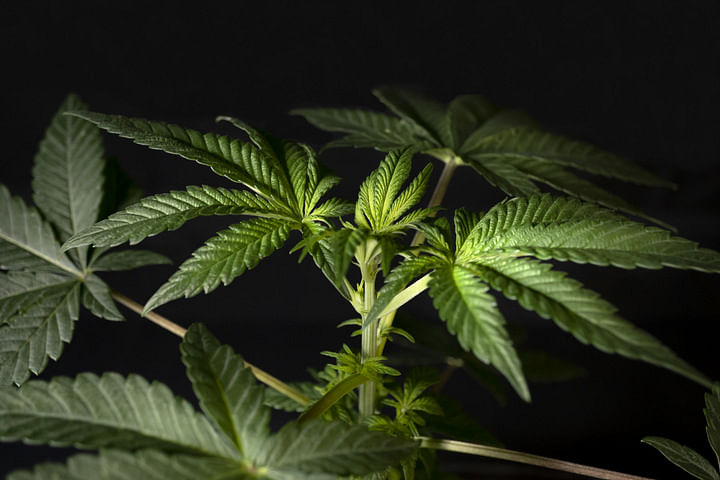
During the vegetative phase, plants use significant quantities of Nitrogen to fuel the rapid production of biomass, including roots, stems, and leaves. As they transition to the flowering stage, the nutrient requirements shift significantly. This transition phase often called the stretch, necessitates high nitrogen levels to support explosive growth where plants can double or even triple in size.
Compared to the vegetative phase, increased phosphorus and potassium are required. Phosphorus is critical for energy transfer and flower development. At the same time, potassium enhances overall plant health, water regulation, and enzyme activity, ensuring a robust transition and preparing the plant for prolific flowering.
Interestingly, plants will consume more nutrients throughout their lifecycle except for Calcium. According to a study by the Volcani Center, very little Calcium was taken up by plants during the second part of their reproductive growth phase.
Feeding Hydroponic Plants Vs. Feeding Living Soil
Ensuring your plants have the right ratio of nutrients during the flowering phase differs depending on your growing style. Growing hydroponically versus living soil requires vastly different approaches. Each method has pros and cons, but ultimately, what works best for you matters the most.
Hydroponics
In hydroponic systems, plants receive nutrients directly through a water-based solution. This method allows for precise control over nutrient levels, ensuring that plants get exactly what they need. Hydroponic nutrients are typically soluble, making them readily available for plant uptake. This immediate availability is particularly beneficial during the rapid growth phases, such as the transition from vegetative to flowering stages. This means your nutrient management needs to be on point, and most growers who use this method purchase specific nutrients that have a particular ratio of nutrients in different parts for veg, transition, and bloom.
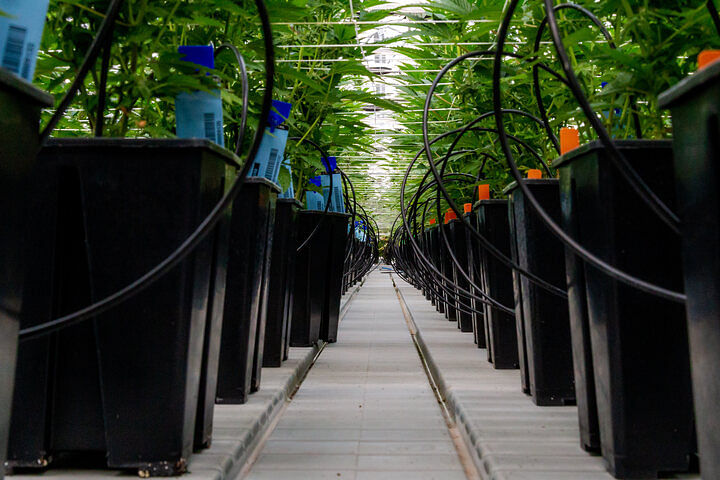
Living Soil
Feeding plants in living soil involves a more holistic approach. Living soil contains a complex ecosystem of microorganisms that decompose organic matter into nutrients that plants can absorb. In this system, nutrients are often insoluble, relying on microbial digestion to become available to plants. This process can be slower but results in a more sustainable and resilient growing environment. Rather than directly feeding the plants, feeding the soil supports long-term soil health and fertility.
Utilizing this growing method is more forgiving and lenient on nutrient delivery. The plant should have access to everything it needs and will automatically consume more or less of the specific nutrients as required.
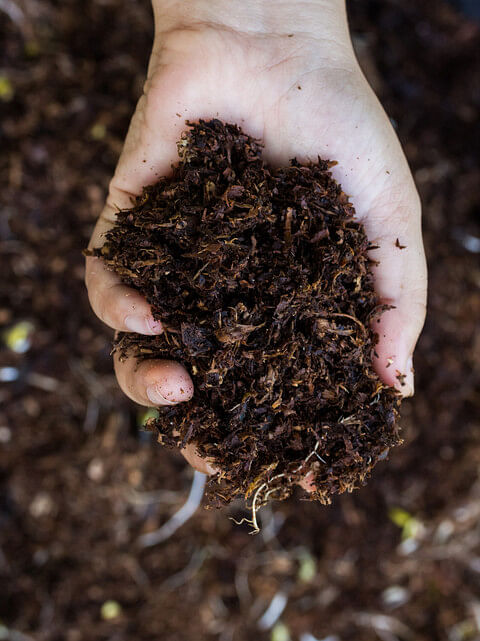
Nitrogen is the exception, as it is highly mobile within soil, water, and the plant. For a more in-depth explanation of nutrient mobility, check out this article. Continual nitrogen application is not necessary but may be beneficial depending on the type of Nitrogen being used and the quantity within the soil. Nitrogen is one of the easiest to read in your plant, as it changes the colour of the leaves significantly. If your leaves begin to yellow from the bottom, your plants most likely need more Nitrogen.
Many living soil growers heavily amend their soil prior to planting and supplement with weekly nutrient teas while others may top dress with dry amendments monthly. Soil testing is an essential tool for maintaining optimal nutrient levels. You can get customized recommendations from the Soil Doctor here.
Nitrogen Needs During The Stretch Phase
The stretch phase marks the transition from vegetative growth to flowering. During this period, plants can double or even triple in size within a few weeks. To support this rapid growth, sufficient Nitrogen is essential. Nitrogen is a critical component of chlorophyll, which plants use for photosynthesis. Without adequate Nitrogen, plants may struggle to sustain the energy required for such vigorous growth, leading to stunted development and lower yields.
Regardless of your growing style, your plants will consume more Nitrogen.
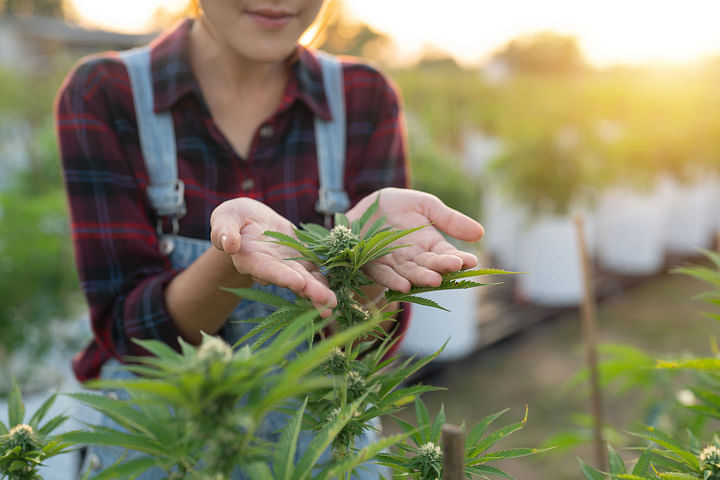
Increased Demand For Potassium And Phosphorus
As plants settle into the flowering stage, their demand for potassium and phosphorus increases significantly. Phosphorus plays a crucial role in energy transfer and storage, supporting the development of flowers and fruits. Potassium, on the other hand, is vital for overall plant health, enhancing disease resistance, water regulation, and the activation of enzymes necessary for growth. Ensuring your plants receive ample nutrients will help promote robust flowering and fruiting.
Other Vital Nutrients For Flowering
While Nitrogen, phosphorus, and potassium are the primary macronutrients needed during the flowering stage, several other nutrients play vital roles:
- Calcium: Essential for cell wall development and stability. Calcium supports the structural integrity of flowers and fruits.
- Magnesium: A central component of chlorophyll, magnesium is crucial for photosynthesis and overall plant metabolism.
- Sulfur: Vital for protein synthesis and enzyme function, sulfur helps form essential oils and flavours in flowers.
- Micronutrients: Elements such as iron, manganese, zinc, and copper, though needed in smaller quantities, are critical for various biochemical processes, including enzyme activation and chlorophyll synthesis.
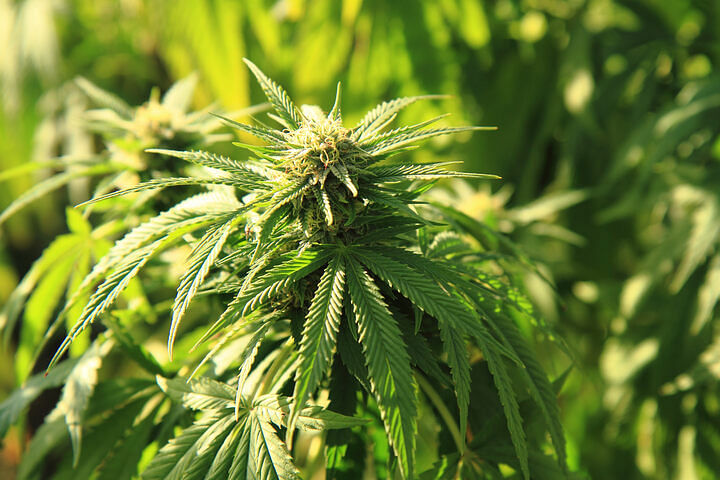
Different Strains Need Different Nutrient Quantities
Some strains are known for being heavy feeders. This means they can consume large quantities of nutrients. This is especially true of sativa leaning varieties that tend to grow larger than their indica counterparts. The more biomass the more nutrients required to fuel that growth. Sour Diesel is an excellent example of a strain that will consume a lot of nutrients.
Transition Tea Nutrient Recipe For Living Soil
To ensure your plants have sufficient nutrients for the flowering stage of growth, you can make this recipe, which I developed and shared originally with my Patreon members.
"This recipe contains all the essential elements for plant growth with a special focus on enriched phosphorous content, which plays a crucial role during this phase by providing additional ATP – Adenosine Triphosphate. ATP serves as the energy currency in plants, facilitating essential cellular processes. The Transition Tea's phosphorous infusion aims to optimize energy availability, promoting successful maturation.
By using fish bone meal for phosphorous we are including additional Nitrogen which is needed during the stretching phase of growth. During this time, plants can sometimes double or even triple in size. With Nitrogen being highly mobile through water, soil, and plants, it is important to ensure we have enough available during this phase. In addition to Nitrogen, fish bone meal contains Calcium, which may be considered the 4th macronutrient for cannabis since it is required in such large amounts.
The addition of fulvic, kelp extract, aloe, and yucca add a wide range of plant hormones that promote overall well-being and act as a natural stimulator. Both kelp and yucca contain Indole acetic acid, a type of auxin (plant hormone) known for promoting cell growth.
Besides auxins, kelp contains Cytokinins which play a role in cell division and differentiation, impacting various aspects of growth and development, such as shoot formation and delay of senescence (aging) in plants. It also contains Gibberellins that stimulate stem elongation, flowering, and fruit development. Abscisic Acid (ABA) is involved in stress responses, including water stress regulation and dormancy induction in seeds. Lastly, Ethylene is a plant hormone responsible for various physiological responses, including fruit ripening, senescence, and responses to environmental stress.
While Malted barley is packed full of enzymes that solubilize carbon-based nutrients and Phosphorous.
Ingredients
- Humic – 1 tsp/gallon
- Fish Bone Powder – 4-20-0 – 2 Tbsp/gallon
- Kelp Extract – 0-0-17 – 1 tsp/gallon
- Aloe - ½ tsp/gallon
- Yucca – 1/8 tsp/gallon
- Malted Barley 1tbsp/gallon
Add ground malted barley to reservoir in tea bag and aerate for 4-12 hours prior to adding anything else. Add the rest of the dry ingredients thoroughly mixing prior to the next addition.
Add the rest of the dry ingredients, thoroughly mixing before the next addition. It is recommended to emulsify powdered ingredients in a small container prior to adding them to the reservoir to ensure they do not sink to the bottom. Use this tea at the first sign of flowering, up to three times a week for the first three weeks of flowering.”
Conclusion
Preparing your plants for the flowering stage involves understanding and adapting to their changing nutrient needs. Whether growing hydroponically or in living soil, providing the right balance of nutrients at the right time is key to achieving optimal growth and yield. By ensuring sufficient Nitrogen during the stretch phase and increasing potassium and phosphorus during flowering, along with other essential nutrients, you can support your plants in producing abundant and healthy flowers.

